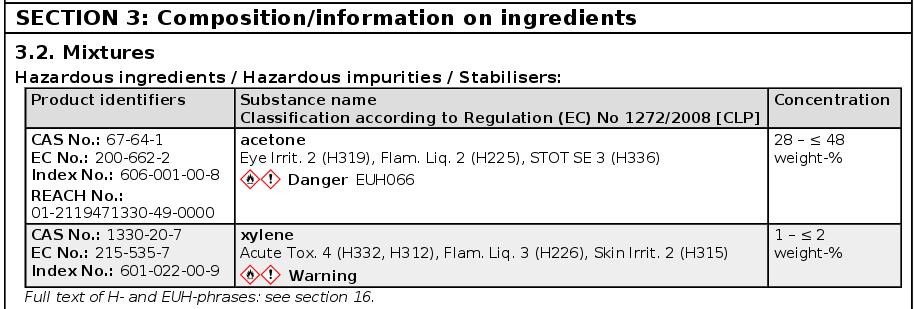What ist the meaning behind product identifiers?
Product identifiers can be found in every safety data sheet – you can’ t do without them. But do you know what is actually hidden behind this term? Quite a few legal cross-references in any case.
What are product identifiers?
The CLP Regulation refers to all information that enables the identification of a substance or mixture as product identifiers. It mentions the identifiers in connection with the information on the label.
The identifiers are therefore first of all independent of whether it is a mixture, a pure substance or a component in a mixture. Typical identifiers are, for example, the substance name (term for identification), CAS number, REACH registration number or the EC number. These identifiers are important to be able to understand, which substances or mixtures a product contains.
Are there any restrictions from specifications?
In the case of restrictions, it always depends on the law you have to comply. In the case of product identifiers in the SDS and on the label, this involves two legal regulations. Firstly, the CLP regulation [1], which also describes the identifiers. Secondly the REACH regulation [2], which explains the requirements for a complete identifier for safety data sheets.
Especially the substance name has specifications if the substance already has a description in Annex VI of the CLP Regulation (legal classifications). As a rule, you should use the product identifiers that the law provides or the identifiers that the ECHA inventory (C&L Inventory) mentions. Numbers should be part of the identifier, if numbers already exist (REACH registration number, EC number).
Consistency is king
Safety data sheets mention substances in several different sections. For example, in connection with limit values in section 8 or with toxicity data in sections 11 and 12. In addition, a substance safety data sheet can be based on a chemical safety report. You can find substance names on the label too.
In order to be able to clearly assign and identify substances, the individual ingredients and mixtures mentioned should, if possible, have the same designations in all these documents and thus use the same product identifiers. This is important to prevent misunderstandings.
Then it’s all clear, isn’t it?
If it were simply a matter of clear communication, we would have no further difficulties with the issue of substance and mixture identification. Unfortunately, it is not always advantageous for manufacturers to describe exactly which components are involved. Because of that, it is possible, to apply for a generalisation of the substance name in order to protect one’s own manufacturing know-how for a fee. The legal basis for this is provided by Article 24 of the CLP Regulation (“Request for use of an alternative chemical name”).

